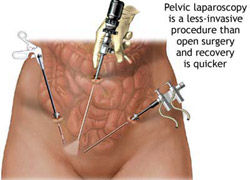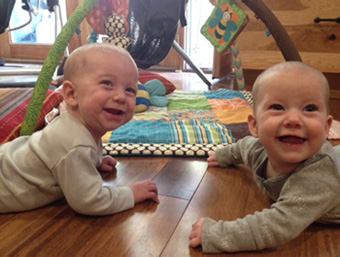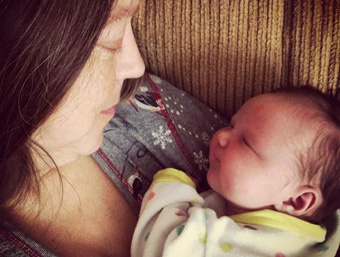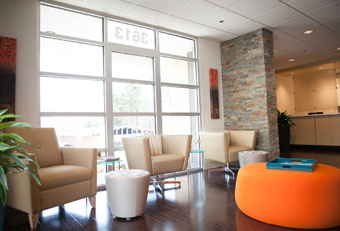Tubal ligation procedures vary in the amount of damage they cause to the fallopian tubes. The two methods that cause the most uncertainty are burning type tubal ligations and tying and cutting type tubal ligation procedures.
 Burning type tubal ligations. Tubal coagulation (also known as tubal burning or tubal cauterization) tends to damage more of the tube than tubal ligation and resection (tying or cutting) or tubal clips/rings. Burning or cauterizing the fallopian tubes with a monopolar coagulator is more destructive than with a bipolar coagulator. With either type of coagulator, the more times the tube is burned, the greater the amount of damage that occurs.
Burning type tubal ligations. Tubal coagulation (also known as tubal burning or tubal cauterization) tends to damage more of the tube than tubal ligation and resection (tying or cutting) or tubal clips/rings. Burning or cauterizing the fallopian tubes with a monopolar coagulator is more destructive than with a bipolar coagulator. With either type of coagulator, the more times the tube is burned, the greater the amount of damage that occurs.
Tying and cutting type tubal ligations. Tying and cutting tubal ligations are usually done through the belly button and within 24 hours of having a vaginal birth or at the time of c-section. The doctors ties off a middle section of each fallopian tube and removes a piece of the tube. The suture prevents you from bleeding from the cut ends. The tubal ends slowly heal closed, the suture dissolves and a gap remains where the section of fallopian tube used to be.
Some doctors remove small sections of the fallopian tube: 1 to 2 cms. Other doctors remove much larger amounts and some doctors will remove both fallopian tube entirely.
More information: Types of tubal ligations that can be reversed
Although the above information can be distressing if you want a tubal reversal, you should realize that most tubal ligations can be reversed.
Can your tubes be reversed?
If you are considering reversal and you have burned tubes or tied and cut tubes, you should realize most of these procedures can be reversed.
The problem with reversing a burned tubal ligation is not the method of tubal ligation…the problem is often with the doctor that did the procedure. Some doctors burn very little of the tube. Other burn about 1 to 2 cm. A few will burn large sections of the tube and, sometimes, even the entire fallopian tube.
Likewise, the problem with reversing a cut and tied tubal ligation is not the method but rather how much of the tube did the doctor remove. Did they remove a small section…or did they remove a large section.
The best way to determine if you are a candidate for tubal reversal is to obtain a copy of the tubal ligation operative report. You can send your report to Dr. Monteith for a free review to determine if you are a candidate.
To see how to obtain your records then you should watch this helpful video for an easier understanding on how to get your tubal ligation records.
How much fallopian tube remains after a tubal ligation?
The remaining amount and condition of the fallopian tubes after tubal ligation procedures varies a great deal.
A patient’s tubal ligation operative report will give an indication about the remaining tubal segments that can be repaired by a tubal reversal procedure. When available, Dr. Monteith always reviews the tubal ligation operative reports that are sent by patients to estimate the likely outcome from a tubal reversal operation. He reviews this information free of charge.
For more information on how to send your tubal ligations for a free review: Sending record for a free review
In most cases, the tubal ligation operative report (and a pathology report if available) will help to determine if tubal reversal is possible.
Until the time of surgery, the actual condition of the fallopian tubes remains unknown. This is partly because doctors differ in how they perform tubal ligation operations. With tubal coagulation procedures, for example, the coagulator can be used at different power settings and applied for varying lengths of time to the fallopian tubes. These details usually are not specified in an operative report. Every operative report is different.
Some operative reports are vague…and will say the tubes were cut and tied on each side. These vague descriptions are not helpful. Some operative reports are not accurate… and will say a ‘small’ section of each tube was burned on each side. One person’s small is another person’s huge.
Most operative reports will provide you with accurate information to let Dr Monteith determine if you are a good candidate for reversal. Some reports are too vague to determine with any degree of certainty.
Examining the fallopian tubes by laparoscopy
 Laparoscopy is a surgical procedure that permits viewing the fallopian tubes through a narrow telescopic camera placed through a small incision inside the belly button and into the abdominal cavity.
Laparoscopy is a surgical procedure that permits viewing the fallopian tubes through a narrow telescopic camera placed through a small incision inside the belly button and into the abdominal cavity.
Laparoscopy can be performed for patients who want to be assured that tubal reversal is possible. It is helpful to think of laparoscopy as an insurance policy. If your tubes can be repaired then great. If your tubes cannot be repaired then you have a quicker surgery, smaller incision, and quicker recovery.
Dr. Monteith is the only reversal surgeon who offers patents a laparoscopy at the time of tubal reversal surgery. He is the only reversal doctor who provides patients a refund of the reversal surgery fee if laparoscopy is done and the tubes cannot be repaired.
Laparoscopy is recommended in cases where the amount of tube remaining is questionable, such as coagulation of multiple sites along the fallopian tube or when operative reports are not available to review.
More information: Reasons to consider screening laparoscopy
Many patients mistakenly believe you need to travel to Dr. Monteith for two visits to have the laparoscopy. This is not corect.
Dr. Monteith performs laparoscopy under general anesthesia. If the laparoscopy shows that your tubes can be repaired, Dr. Monteith proceeds directly to tubal reversal. The patient is under anesthesia only one time.
If the tubes can be repaired then the camera is removed and the tubal ligation is reversed.
If the tubes cannot be repaired then the camera is removed, the surgery is shorter, time under anesthesia is less, and the patient will be refunded a large part of the fee for surgery.
Screening Laparoscopy Cost
 There is an additional fee for screening laparoscopy.
There is an additional fee for screening laparoscopy.
If tubal reversal is not possible, the operation will end and you will receive a refund of the tubal reversal surgery fee. The laparoscopy fee is not refundable but the reversal surgery fee is refunded
For more information: Cost of screening laparoscopy
The screening laparoscopy option is similar to an insurance policy. You purchase it and hope you never need it, but it is certainly nice if you do.
Most patients do not elect to have the screening laparoscopy because of its additional cost and the knowledge that Dr. Monteith can repair the fallopian tubes in 98% of cases, regardless of the method of tubal ligation.









